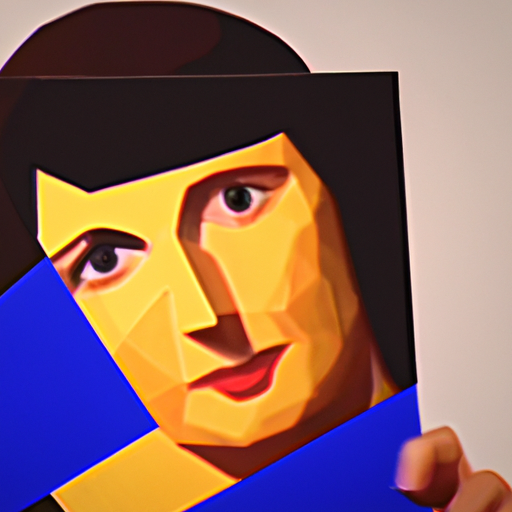
-
Table of Contents
- Synthetic Cubism’s Impact on Graphic Art
- Understanding Synthetic Cubism
- The Impact on Graphic Art
- 1. Breaking the Boundaries of Representation
- 2. Embracing Abstraction
- 3. Incorporating Text and Image
- Case Study: Juan Gris
- The Legacy of Synthetic Cubism in Graphic Art
- 1. Collage and Mixed Media
- 2. Abstract and Conceptual Design
- Summary
Synthetic Cubism’s Impact on Graphic Art

Synthetic Cubism, a movement that emerged in the early 20th century, had a profound impact on the world of art. Developed by Pablo Picasso and Georges Braque, this innovative style revolutionized the way artists approached representation and paved the way for new possibilities in graphic art. In this article, we will explore the key characteristics of Synthetic Cubism and examine its influence on graphic art.
Understanding Synthetic Cubism
Synthetic Cubism, also known as the second phase of Cubism, emerged around 1912 and lasted until approximately 1919. It was a reaction to the earlier Analytical Cubism, which focused on breaking down objects into geometric forms and analyzing their structure. Synthetic Cubism, on the other hand, aimed to reconstruct objects using a combination of different materials and techniques.
One of the defining features of Synthetic Cubism was the use of collage. Artists would incorporate various materials, such as newspaper clippings, fabric, and even three-dimensional objects, into their artworks. By combining these elements, they created a new visual language that challenged traditional notions of representation.
The Impact on Graphic Art
Synthetic Cubism had a significant impact on the world of graphic art, influencing artists and designers in various ways. Let’s explore some of the key ways in which this movement shaped the field:
1. Breaking the Boundaries of Representation
Synthetic Cubism shattered the traditional boundaries of representation, encouraging artists to experiment with new ways of depicting the world around them. By incorporating different materials and techniques, artists were able to create complex and layered compositions that went beyond the limitations of traditional two-dimensional art.
For graphic artists, this meant that they were no longer confined to a single medium or technique. They could now combine different elements, such as typography, photography, and illustration, to create visually striking and conceptually rich designs.
2. Embracing Abstraction
Another significant impact of Synthetic Cubism on graphic art was the embrace of abstraction. By deconstructing and reassembling objects, artists were able to move away from literal representation and explore the realm of the abstract.
This shift towards abstraction had a profound influence on graphic design, as it allowed artists to communicate ideas and emotions in a more subjective and symbolic manner. Designers began to experiment with non-representational forms, bold colors, and dynamic compositions, creating visually engaging and thought-provoking designs.
3. Incorporating Text and Image
One of the most notable contributions of Synthetic Cubism to graphic art was the integration of text and image. Artists would often incorporate fragments of text, such as newspaper headlines or handwritten letters, into their collages, blurring the boundaries between visual and verbal communication.
This approach had a lasting impact on graphic design, as it opened up new possibilities for combining text and image in a cohesive and meaningful way. Designers began to experiment with typography, using it not only as a means of conveying information but also as a visual element that could enhance the overall composition.
Case Study: Juan Gris
To further illustrate the impact of Synthetic Cubism on graphic art, let’s examine the work of Juan Gris, one of the prominent artists associated with this movement.
Juan Gris was a Spanish painter and sculptor who played a crucial role in the development of Synthetic Cubism. His works often featured collages of newspaper clippings, musical scores, and other found objects, combined with bold geometric forms.
One of Gris’s most famous works, “Still Life with Guitar” (1913), exemplifies the principles of Synthetic Cubism. In this painting, he combines elements of a guitar, a wine glass, and a newspaper, creating a complex composition that challenges traditional notions of representation.
This approach to composition and the use of collage had a significant influence on graphic art. Designers began to experiment with similar techniques, incorporating found objects, photographs, and typography into their designs to create visually dynamic and conceptually rich compositions.
The Legacy of Synthetic Cubism in Graphic Art
The impact of Synthetic Cubism on graphic art can still be felt today. Its influence can be seen in various contemporary design practices and movements. Let’s explore some of the ways in which this movement has shaped the field:
1. Collage and Mixed Media
The use of collage and mixed media, popularized by Synthetic Cubism, continues to be a prevalent technique in graphic art. Designers often combine different materials and techniques to create visually engaging and conceptually rich compositions.
For example, in advertising, collage is frequently used to create eye-catching visuals that capture the viewer’s attention. By combining various elements, such as photographs, illustrations, and typography, designers can create dynamic and memorable advertisements.
2. Abstract and Conceptual Design
The embrace of abstraction and conceptual thinking, inspired by Synthetic Cubism, is also evident in contemporary graphic design. Designers often use non-representational forms, bold colors, and dynamic compositions to communicate ideas and emotions in a more subjective and symbolic manner.
Additionally, the integration of text and image, a hallmark of Synthetic Cubism, continues to be a prevalent practice in graphic design. Designers often experiment with typography, using it as a visual element that enhances the overall composition and conveys meaning.
Summary
Synthetic Cubism, with its innovative use of collage and reconstruction of objects, had a profound impact on graphic art. It broke the boundaries of representation, embraced abstraction, and integrated text and image in new and exciting ways. Artists like Juan Gris further expanded on these principles, creating visually dynamic and conceptually rich compositions.
The legacy of Synthetic Cubism can still be seen in contemporary graphic design practices. Collage and mixed media techniques continue to be prevalent, and designers often explore abstraction and conceptual thinking in their work. The integration of text and image remains a powerful tool for conveying meaning and enhancing visual compositions.
Overall, Synthetic Cubism’s impact on graphic art is undeniable. It revolutionized the field, opening up new possibilities for artists and designers alike. By challenging traditional notions of representation and exploring new techniques, Synthetic Cubism continues to inspire and shape the world of graphic art.
